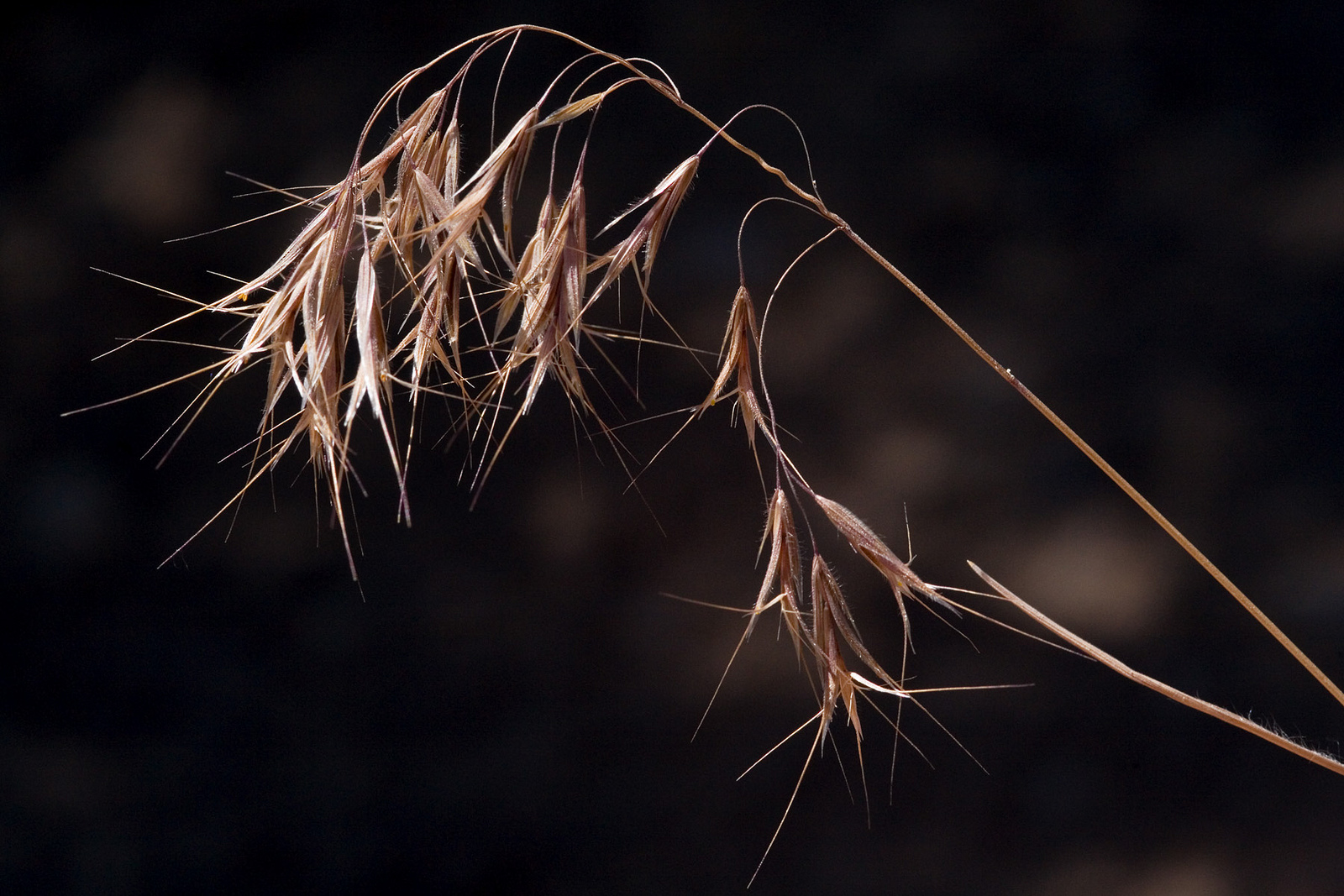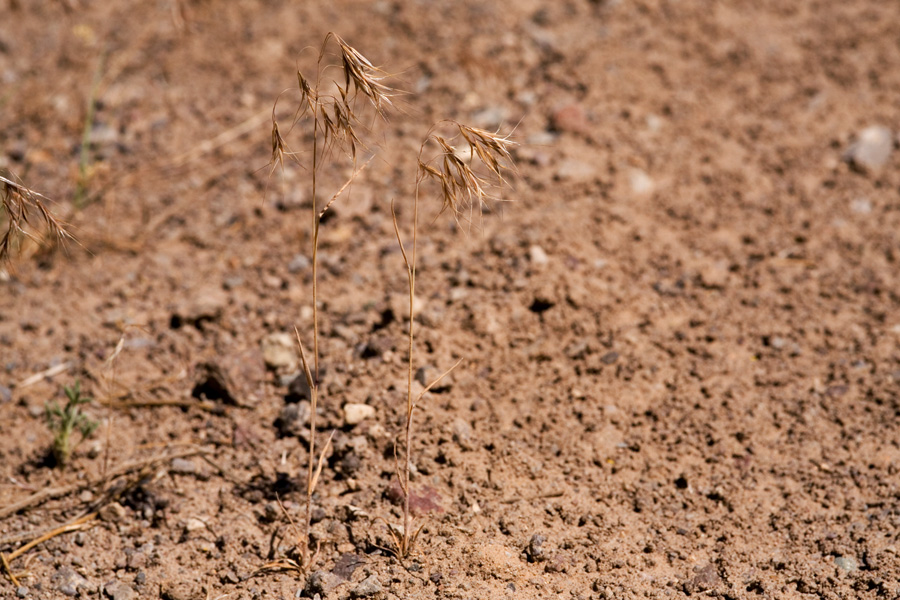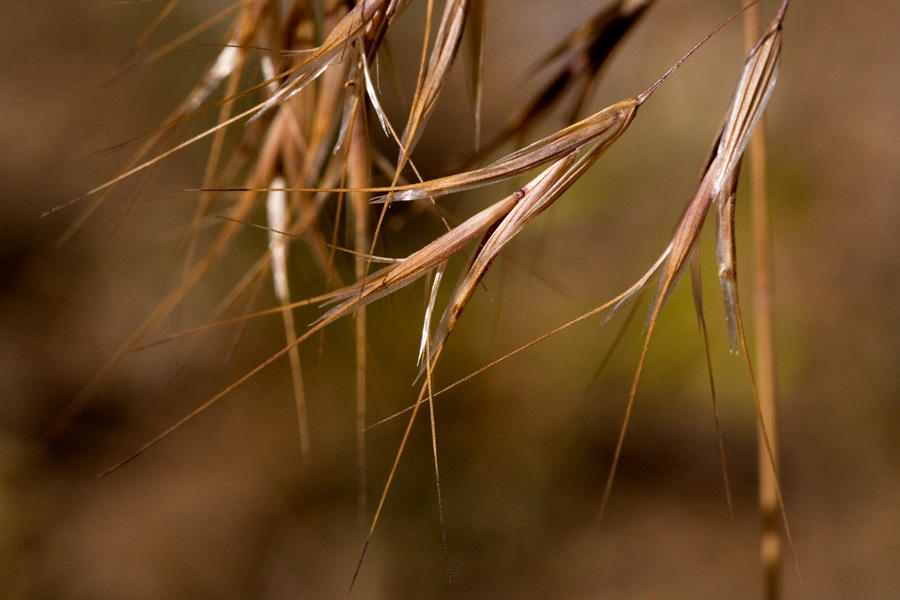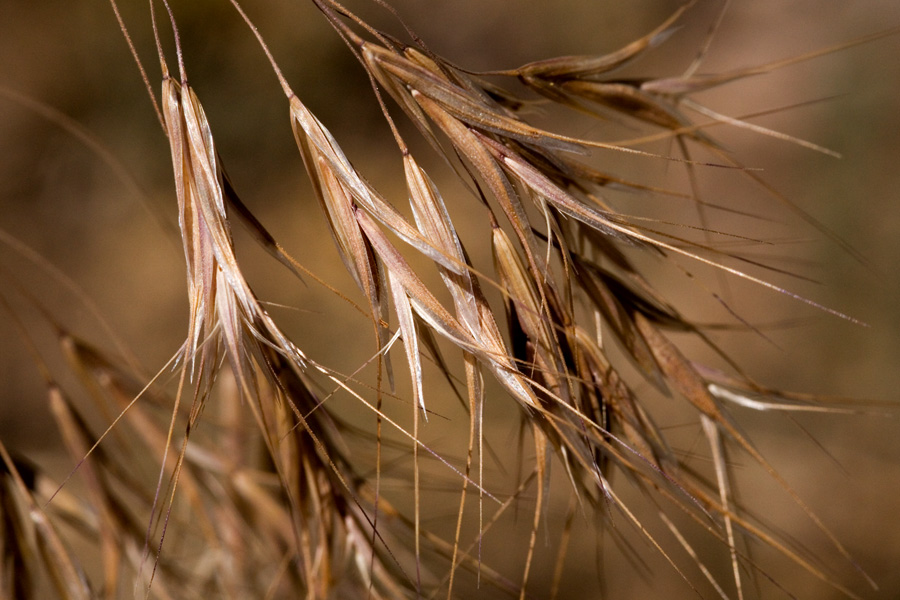Selected Plants of Navajo Rangelands
Cheatgrass

Cheatgrass is an invasive cool-season annual grass from the Mediterranean. It has solitary stems 4 to 24 inches tall, with soft drooping seedheads. Cheatgrass can provide good forage for a short time, but matures quickly and becomes unpalatable. At maturity, the plant turns reddish and cures to a light tan. After curing, late spring cheatgrass becomes highly flammable and has changed the fire frequency of western rangelands.
In Europe, cheatgrass historically grew in the decaying straw of thatched roofs. "Tectum" is Latin for roof, hence the name Bromus tectorum, "brome of the roofs." Cheatgrass has developed into a severe weed in several agricultural systems throughout North America, particularly western pastureland, rangeland, and winter wheat fields. It is now estimated to infest more than 101 million acres in western states.





©2018 NMSU Board of Regents.
Individual photographers retain all rights to their images.
Partially funded by the
Western Sustainable
Agriculture Research and Education Program
(westernsare.org; 435.797.2257),
project EW15-023.
Programs and projects supported by Western SARE are
equally open to all people.